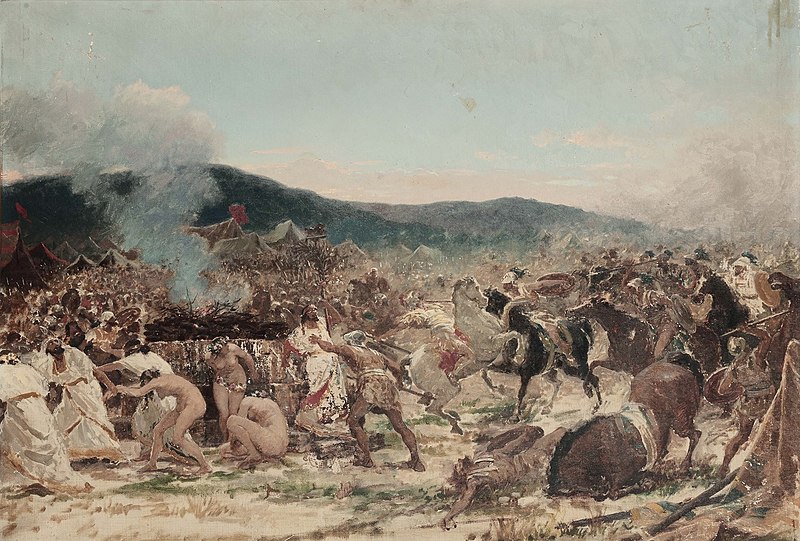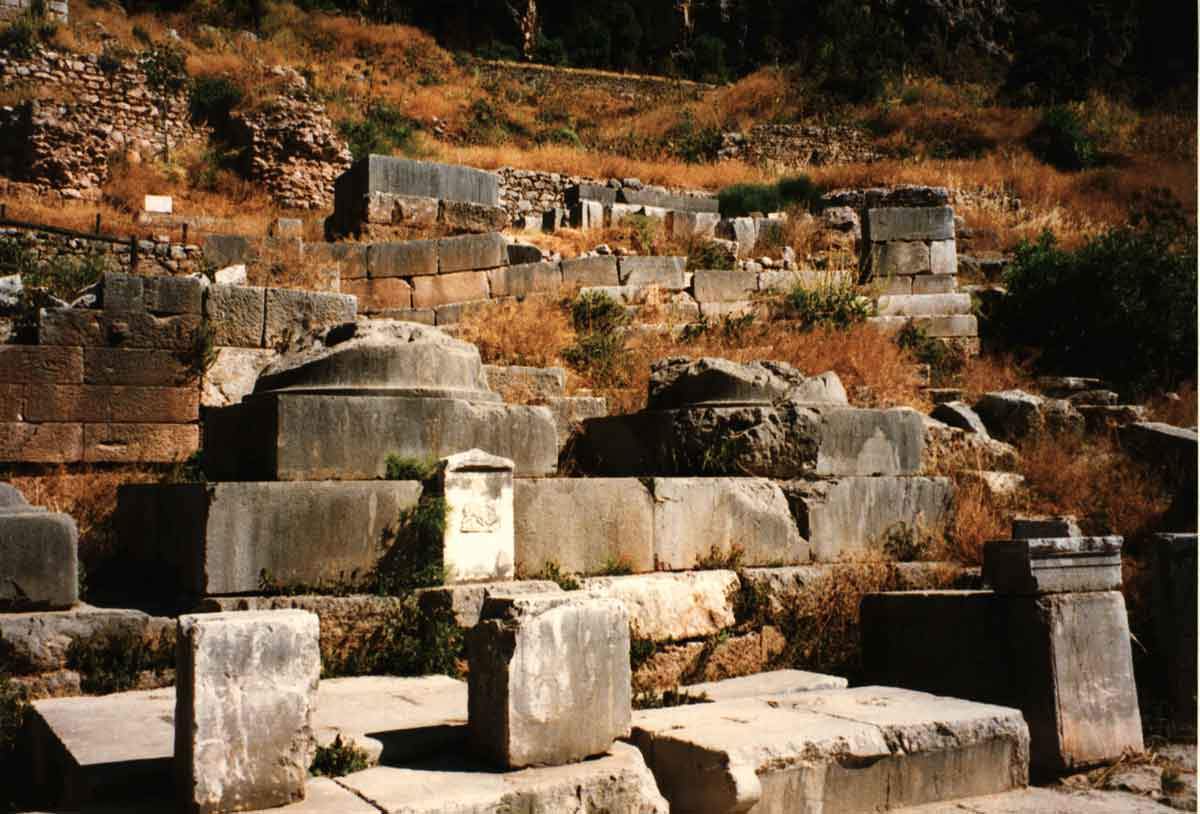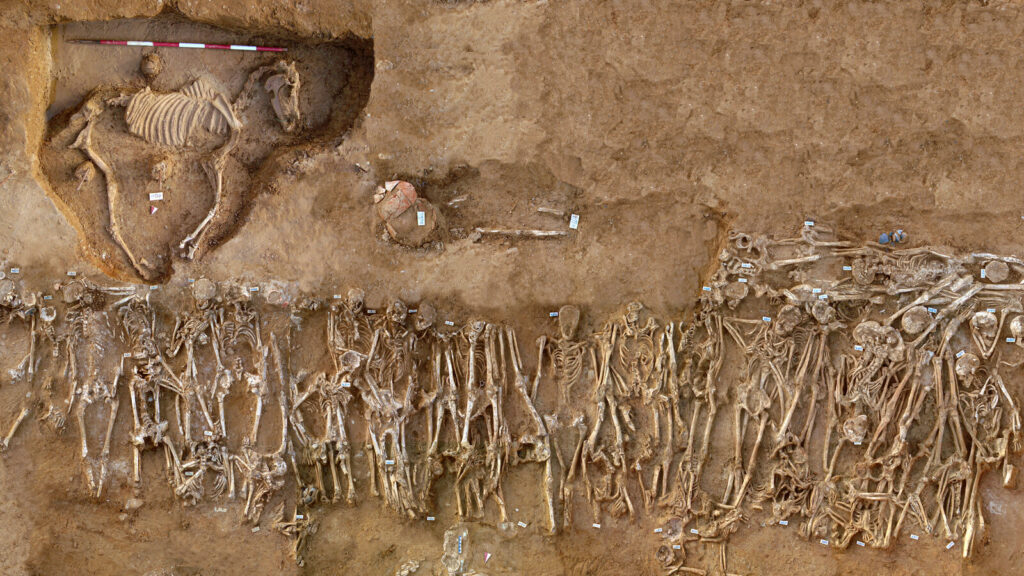The recent discovery of a 2,500-year-old mass grave in Himera, Sicily, has offered groundbreaking insights into the composition and dynamics of ancient Greek armies. Contrary to the traditional portrayal of Greek soldiers as noble defenders of their homeland, DNA analysis of the remains found in this mass grave has unveiled a more complex picture. Published in the Proceedings of the National Academy of Sciences, the study reveals that the troops defending Himera during its historic battles were not solely local Greek heroes but included a diverse array of mercenaries from various regions.
This finding challenges the longstanding perception propagated by ancient Greek historians, who often depicted their soldiers as homogeneous and patriotic. Instead, the genetic diversity among the remains suggests that Greek armies were more cosmopolitan and relied significantly on foreign mercenaries. These soldiers were likely drawn from different parts of the Mediterranean and beyond, reflecting a broader trend in ancient warfare where states hired professional fighters to bolster their ranks.
Mercenaries in Ancient Greece

Throughout history, mercenaries have been a constant presence in conflicts, motivated by a quest for adventure or monetary reward. These hired fighters would align themselves with foreign armies and rebel factions, often playing crucial roles in battles. However, in ancient Greece, the role of mercenaries was frequently downplayed or overlooked by historians who preferred to idealize the image of the Homeric hero and the unity of Greek city-states.
Ancient Greek historians tended to emphasize the valor and patriotism of Greek citizens, promoting a narrative of unified city-states heroically defending their homeland. This romanticized view often excluded the more pragmatic reality of employing mercenaries. The negative connotations associated with mercenaries—such as greed, shifting loyalties, and the destabilization of societies—contributed to this historical bias. Mercenaries were seen as opportunistic and unreliable, qualities that clashed with the esteemed virtues of loyalty and bravery celebrated in Greek culture.
Consequently, ancient authors and historians embellished the accounts of battles, focusing on the contributions of citizen-soldiers while neglecting the involvement of hired fighters. This selective retelling created a skewed perception of Greek warfare, one that celebrated civic unity and heroism at the expense of acknowledging the complex and often necessary reliance on mercenaries.
The Battle of Himera: Unveiling Genetic Ancestry from Ancient Greece

The Battle of Himera in 480 B.C. is often regarded as a pivotal moment in Greek history, symbolizing the unity and valor of Greek citizens defending their homeland against foreign invaders. According to historical accounts, the Greek troops heroically repelled the Carthaginian forces, solidifying Greek identity and their dominance in the region. However, recent discoveries have challenged this traditional narrative.
DNA analysis conducted on the remains found in the communal graves of Himera’s west necropolis reveals that the defending forces were not exclusively composed of Greek citizens. Instead, the graves were predominantly occupied by professional soldiers from distant regions, including Ukraine, Latvia, and Bulgaria. This new evidence supports earlier research suggesting a significant presence of mercenaries in the battles at Himera.
The role of mercenaries and their historical narratives

The recent study on the Battle of Himera and the DNA analysis of the remains found in the west necropolis have highlighted the significant, yet often understated, role of mercenaries in ancient Greek warfare. Greek historian Angelos Chaniotis notes that while mercenaries are mentioned in historical texts, their presence is frequently obscured by the predominant narrative of heroic citizen-soldiers and hoplites.
Greek historians of the era likely minimized the importance of mercenaries to maintain an idealized portrayal of Greek armies. This depiction emphasized the valor and unity of Greek citizens, particularly the hoplites—armored spearmen who were seen as the quintessential defenders of the polis (city-state). The inclusion of mercenaries, often perceived as driven by monetary gain and lacking allegiance to the city-state, would have contradicted this heroic image and potentially undermined the moral and civic ideals that Greek historians sought to promote.
Insights from the Mass Graves in Himera

The mass graves uncovered in Himera’s west necropolis during a rail line construction project have significantly advanced our understanding of the composition and origins of the soldiers who participated in the Battles of Himera. These discoveries paint a more complex picture of ancient Greek warfare, highlighting the presence and role of mercenaries.
The remains of adult men found in the graves required multiple lines of evidence to distinguish them as combatants. Violent traumas, such as spearheads lodged in bodies, indicated death in action.
The absence of armor and weapons, which would have been recovered by survivors, further supported the identification of fallen soldiers. Chemical isotopes in their bones suggested that these soldiers were born in distant regions, and their genomic analysis revealed genetic similarities with individuals from Ukraine and Latvia.
The Identity of Mercenaries and Greek Colonists

The research also highlighted the intentional grouping of foreign fighters in the same mass graves. These mercenaries were buried with respect but were still differentiated from Greek soldiers, indicating a distinction within the Greek colonists’ identity construction. The smaller mass graves, believed to contain Greek soldiers, demonstrated greater care in body placement and burial objects, emphasizing their higher status or prestige. This differentiation underscores the complex social and cultural dynamics of ancient Greek warfare, where even in death, the social hierarchy and identity distinctions were meticulously maintained.
The discovery of the mass grave in Himera has challenged the traditional narrative of ancient Greek armies and shed light on the prevalence of mercenaries in ancient warfare. The DNA analysis of the remains found in the grave has revealed that the troops defending Himera consisted of a diverse group of mercenaries from various regions. This finding provides valuable insights into the recruitment strategies and dynamics of ancient Greek armies.

Archaeological evidence, including the discovery of mass graves and associated artifacts, offers tangible proof of the past. The physical remains of soldiers, their injuries, and their burial contexts provide direct insights into the realities of ancient warfare. For instance, the violent traumas observed in the skeletal remains at Himera indicate deaths in battle, while the absence of armor and weapons suggests that surviving comrades retrieved these valuable items.
Perspective through video






